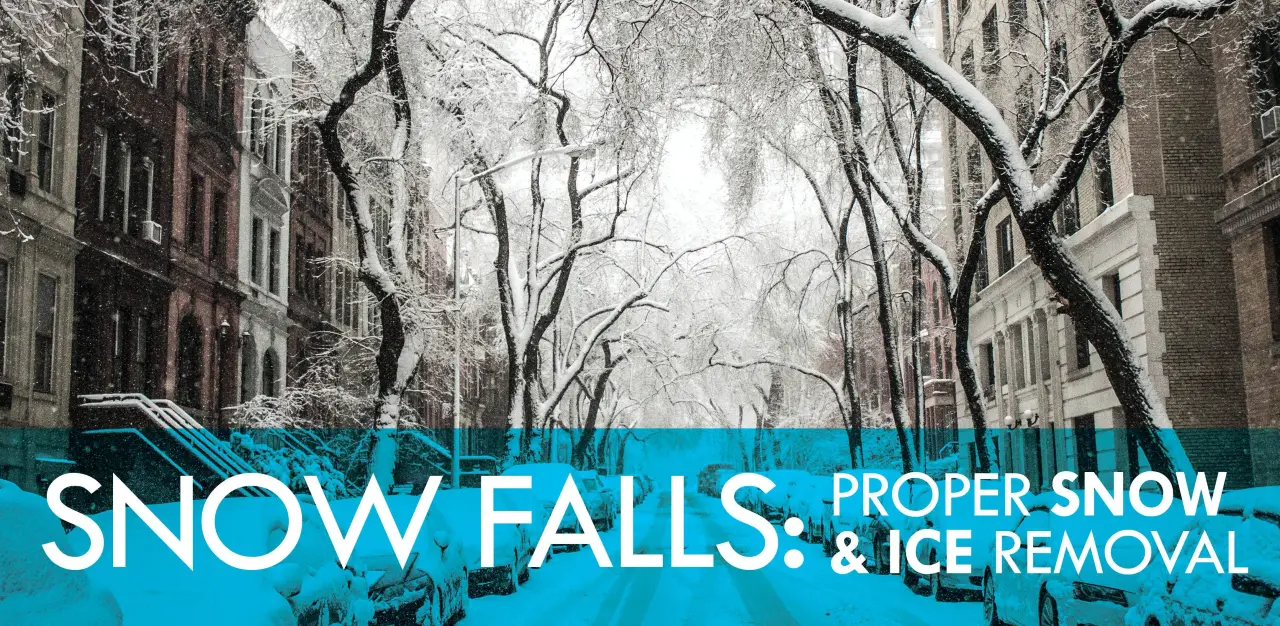Snow Falls: Proper Snow & Ice Removal
The snow isn’t the only thing that falls in the winter. Once snow is on the sidewalk and driveway – melting and refreezing into ice – anyone is at risk to fall. Follow these tips for proper snow and ice removal to get rid of slippery surfaces and avoid injury the process.
Effective Snow and Ice Removal Techniques
Shoveling is the go-to option for many people, but you can try other snow and ice removal techniques before you break out the shovel:
- Apply a melter before it snows: If the forecast says snow, apply a magnesium chloride snow-melting blend to the driveway a few hours before the storm hits. This preemptive strike is effect for melting snow accumulations of 2 inches or less while preventing ice from bonding to the pavement. Apply one gallon for every 1,000 square feet.
- Keep ice at bay: Deicers are great for melting ice off pavement. Rock salt is a popular option, but it only works down to about 12 degrees and can eat away at concrete. Magnesium chloride and calcium chloride could be better options because they work down to about -20 degrees and are less harsh. Spread deicers with a small shovel or use a mechanical spreader for large areas.
- Tread carefully: Until the deicer does its job, watch your step on icy pavements. Toss sand or kitty litter on walkways to improve traction.
- Break out the snow blower: This is the fastest way to remove a large amount of snow. Wait until there’s at least 1.5 inches of snow on the ground. Then use your snow blower to clear snow off any large, flat surface, such as the sidewalk in front of your home.
How to Shovel a Driveway or Sidewalk Without Hurting Your Back
If you must resort to shoveling your driveway or sidewalk, help prevent an injury by using these techniques:
- Invest in the right shovel: Look for a lightweight aluminum or plastic shovel with a nonstick finish to make unloading snow easier. An ergonomic S-shaped handle saves your back by letting you stand more upright as you shovel snow.
- Warm up and stretch: Cold, tight muscles are more likely to be strained than warm, flexible muscles. Before heading outside, warm up with a few jumping jacks or by marching in place. Then stretch your lower back and hamstrings by bending at the waist and reaching for your toes.
- Don’t wait for the snow to stop: It’s much easier to shovel 2 inches of snow than 6. Plus, by shoveling multiple times during a storm, you keep the pavement exposed to sunlight, which helps prevent ice from forming.
- Keep your loads light: Fill the snow shovel only partway before dumping it. If any load feels too full to lift, sift some snow out of the shovel before lifting and dumping.
- Use back-friendly shoveling techniques: Bend at the hips and knees while keeping your back straight. Pivot your whole body when turning to face a new direction instead of twisting your spine. Walk to the snow piling location rather than reaching or tossing snow.
- Heap snow strategically: Prevent throwing snow against the side of the house. Melting and refreezing water can cause cracks to form in the foundation walls. Don’t pile snow against a wooden fence either, since the wood could be damaged as the snow melts.
If snow and ice removal isn’t something you want to deal with, leave the work to The Grounds Guys®. We provide snow and ice management services to keep your residential or commercial property beautiful and safe all winter long.
 Click to call
Click to call


